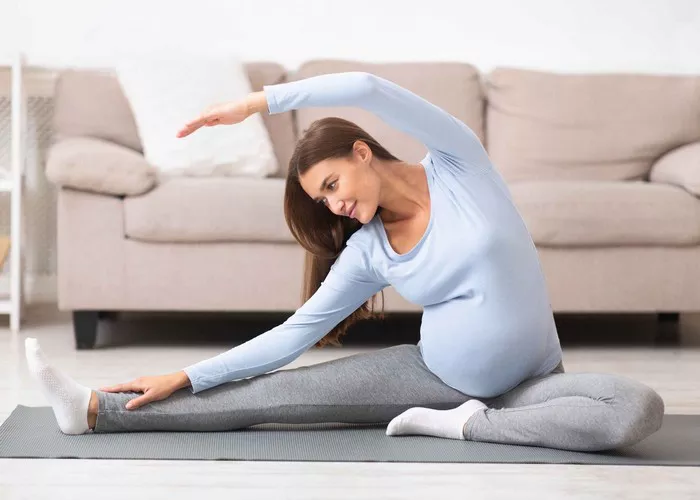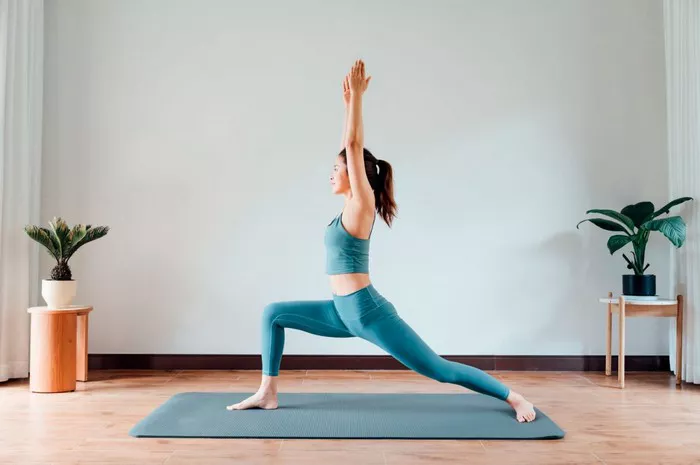Yin yoga is a gentle form of yoga that focuses on deep stretching and relaxation. It involves holding poses for extended periods, usually three to five minutes. This practice targets the connective tissues, like ligaments and fascia, rather than just the muscles. Many practitioners find it calming and meditative. Yin yoga promotes flexibility and can help with stress relief. It allows for introspection and a deeper connection with the body.
When considering yin yoga during pregnancy, it is essential to understand the changes happening in the body. Pregnancy involves significant physical and emotional shifts. Hormones like relaxin increase, making joints more flexible. While this can be beneficial, it also requires careful attention to avoid overstretching or injury. Pregnant individuals must be mindful of their bodies and the signals they receive during practice. It is always best to consult a healthcare provider before starting any new exercise regimen during pregnancy.
Benefits of Yin Yoga During Pregnancy
Yin yoga offers several benefits for those who are pregnant. First, it helps alleviate common discomforts such as back pain, tension in the hips, and anxiety. The slow pace of yin yoga encourages relaxation and can reduce stress. This is particularly important during pregnancy when emotions can fluctuate widely. By promoting a sense of calm, yin yoga can create a more positive mindset for expectant mothers.
Moreover, yin yoga can improve flexibility, which is beneficial as the body prepares for labor. Many poses open up the hips and pelvis, making them more flexible for childbirth. Deep breathing techniques used in yin yoga can also enhance oxygen flow to both the mother and the baby. This can lead to better overall health during pregnancy. Engaging in regular yin yoga practice can foster a deeper mind-body connection, helping mothers-to-be feel more grounded and present during this transformative time.
Precautions to Take When Practicing Yin Yoga
While yin yoga has many benefits, certain precautions are necessary. Expectant mothers should listen to their bodies and modify poses as needed. Some traditional yin poses may not be suitable for pregnant individuals, especially in the later stages of pregnancy. For instance, deep twists and poses that require lying on the belly should be avoided. Instead, modifications should be made to accommodate the growing belly and changing center of gravity.
It is advisable to seek classes specifically designed for pregnant individuals. These classes often focus on safe modifications and emphasize poses that are beneficial during pregnancy. Instructors experienced in prenatal yoga can guide expectant mothers through safe practices. If attending a class is not possible, many resources are available online. Online videos and tutorials can provide guidance on how to adapt yin yoga for pregnancy.
Listening to Your Body During Practice
Listening to your body is crucial when practicing yin yoga during pregnancy. Each pregnancy is unique, and what feels good for one person may not feel right for another. Expectant mothers should be attentive to any discomfort or pain. If a pose feels wrong, it is essential to come out of it and modify as needed. Gentle stretching should feel pleasant, not painful. This approach promotes a safe practice that respects the body’s limits.
Maintaining an open line of communication with healthcare providers is also important. Regular check-ins can help ensure that any physical activity, including yoga, is safe for both the mother and the baby. Healthcare providers can offer personalized advice based on individual health needs. Remember that it is always better to err on the side of caution.
Specific Poses to Consider
Some specific yin poses can be beneficial during pregnancy, focusing on relaxation and opening the hips. Poses like Supported Child’s Pose, Bound Angle Pose, and Legs Up the Wall are often safe and soothing. Supported Child’s Pose allows for gentle stretching of the back while providing support. Bound Angle Pose helps open the hips, which can relieve tension. Legs Up the Wall is excellent for reducing swelling in the legs and feet, promoting circulation.
Using props such as bolsters, blankets, or pillows can enhance comfort during practice. Props can provide support in various poses, making them more accessible and enjoyable. Expectant mothers can create a cozy space for practice, using these tools to help maintain relaxation and stability. Ensuring comfort during practice is key to a safe and enjoyable experience.
Modifications for Common Yin Poses
Modifications are essential when practicing yin yoga during pregnancy. For instance, in poses like Forward Fold, it is helpful to bend the knees and keep a soft spine. This modification eases pressure on the belly and lower back. In Dragon Pose, which traditionally requires a deep lunge, it may be more comfortable to use a lower lunge or even place hands on blocks for support.
Additionally, when practicing Sphinx Pose, a gentle backbend, it can be beneficial to keep the elbows wide and shoulders relaxed. This helps avoid any unnecessary strain on the belly. As pregnancy progresses, modifications will likely become more necessary. Expectant mothers should not hesitate to adapt poses to their comfort levels.
Creating a Safe Practice Environment
Creating a safe practice environment is vital for practicing yin yoga during pregnancy. Choose a quiet space where distractions are minimized. A calm atmosphere can enhance relaxation and focus during practice. Dim lighting, soft music, or aromatherapy can contribute to a peaceful environment. Ensure that the space is warm enough to promote relaxation but not too hot, as overheating can be uncomfortable during pregnancy.
Having the right props on hand is also important. Blankets, bolsters, and blocks can provide necessary support during poses. These tools can help facilitate deeper relaxation and prevent strain. A comfortable yoga mat is essential to prevent slipping and provide cushioning. When the environment is conducive to practice, it becomes easier to focus on the experience and benefits of yin yoga.
The Importance of Breathwork
Breathwork plays a significant role in yin yoga and can be particularly beneficial during pregnancy. Deep, mindful breathing promotes relaxation and can help reduce anxiety. Techniques like diaphragmatic breathing allow for deeper oxygen flow, benefiting both the mother and the baby. Practicing breath awareness can help mothers feel more connected to their bodies and the life they are nurturing.
Incorporating breathwork into practice can also ease discomfort. Focusing on the breath helps to anchor the mind and promote calmness. During challenging moments in yoga or in everyday life, returning to the breath can be a grounding technique. This focus can enhance the overall experience of yin yoga, making it more beneficial for emotional and physical well-being.
See also: What Is True Yoga Prenatal for Expecting Mothers?
Consulting with Healthcare Providers
Before starting or continuing any yoga practice during pregnancy, consulting with healthcare providers is crucial. They can offer personalized recommendations based on individual health conditions and pregnancy progression. It is essential to communicate any existing health issues or concerns to ensure a safe practice. Healthcare providers can help guide expectant mothers on what types of exercise are suitable for their specific situations.
If there are any complications during pregnancy, such as high blood pressure or risk of preterm labor, adjustments to physical activity may be necessary. Having professional guidance ensures that mothers-to-be can engage in safe practices that support their well-being and that of their baby. Remember, the primary goal during pregnancy is to maintain health and safety for both the mother and child.
Conclusion
In conclusion, yin yoga can be a safe and beneficial practice during pregnancy when approached mindfully. The emphasis on gentle stretching, relaxation, and breathwork supports both physical and emotional well-being. However, it is crucial to prioritize safety by listening to the body and seeking professional guidance. Modifying poses, creating a comfortable environment, and practicing breath awareness can enhance the overall experience of yin yoga.
As every pregnancy is unique, what works for one individual may not work for another. Therefore, it is essential to remain flexible and open to adjustments throughout the journey. By doing so, expectant mothers can enjoy the many benefits of yin yoga, fostering a deeper connection with their bodies and preparing for the exciting journey of motherhood.
Related topics:






















